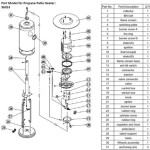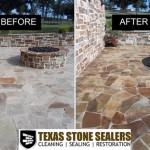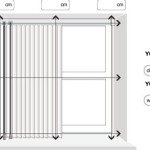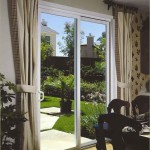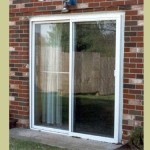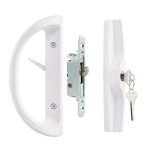DIY Patio Furniture Cushions: A Comprehensive Guide
Patio furniture cushions endure significant wear and tear from sun exposure, moisture, and general use. Replacing worn or faded cushions can revitalize an outdoor space, and creating them independently offers a cost-effective and customizable alternative to purchasing ready-made options. This article provides a detailed guide to crafting patio furniture cushions, encompassing material selection, pattern creation, sewing techniques, and finishing touches.
The process begins with accurate measurement and design. Precise dimensions are crucial for a well-fitting cushion. Consider the existing furniture frame and the desired thickness and style of the cushions. Careful planning at this stage will prevent complications during the construction process.
Material selection plays a critical role in the longevity and comfort of your DIY patio furniture cushions. The choice of fabric and filling impacts both the aesthetic appeal and the functional properties of the finished product. Prioritize materials that are specifically designed for outdoor use to withstand the elements.
The successful execution of DIY patio furniture cushions requires a moderate level of sewing skill and access to basic sewing equipment. Familiarity with fundamental sewing techniques, such as straight stitching, backstitching, and working with zippers or other closures, is beneficial. Preparation and patience are key to achieving a professional-looking outcome.
Key Point 1: Material Selection – Fabric and Fill
Selecting the appropriate fabric for outdoor cushions is paramount. Look for fabrics labeled as "outdoor," "marine," or "UV-resistant." These fabrics are typically treated to resist fading from sunlight and are water-repellent or waterproof. Common choices include:
Solution-Dyed Acrylic:
This is a premium option known for its exceptional durability, colorfastness, and resistance to mold, mildew, and staining. Solution-dyed acrylic fabrics maintain their vibrancy even after prolonged exposure to the sun.Polyester:
Outdoor polyester fabrics are a more affordable alternative to acrylic. They are generally water-resistant and resistant to fading, although not to the same extent as solution-dyed acrylic. Look for high-quality polyester fabrics with a UV coating for improved performance.Olefin:
Olefin fabric is another durable and budget-friendly option. It is resistant to stains, mildew, and fading, and it is also lightweight and comfortable. However, olefin may not be as resistant to abrasion as acrylic or polyester.Beyond the primary fabric, consider the lining. A breathable, water-resistant lining fabric can further protect the cushion filling from moisture and extend the lifespan of the cushion. Spunbond polypropylene is a popular choice for lining material.
The cushion filling is equally important. The choice of filling will affect the cushion's comfort, shape retention, and resistance to moisture. Suitable options include:
Polyester Fiberfill:
This is a common and affordable option for cushion filling. It is lightweight, comfortable, and relatively water-resistant. However, polyester fiberfill can compress over time and may require replacement after a few seasons. Choose a high-loft fiberfill for better support and longevity.Dryfast Foam:
This open-cell foam is specifically designed for outdoor use. It allows water to drain quickly, preventing the growth of mold and mildew. Dryfast foam is more expensive than polyester fiberfill, but it offers superior durability and shape retention.Shredded Foam:
Shredded foam is a cost-effective option that conforms well to the body. It is often made from recycled materials. However, shredded foam can be prone to clumping and may not provide as much support as other filling options. Ensure the shredded foam is clean and dry before using it in your cushions.When selecting filling, consider the desired firmness and thickness of the cushion. Thicker cushions generally require more filling. It is advisable to choose a filling that is slightly oversized to ensure a plump and well-filled cushion.
Key Point 2: Creating Patterns and Cutting Fabric
Accurate pattern creation is essential for achieving a professional-looking cushion. There are several methods for creating patterns, depending on the shape and complexity of the cushion.
Direct Measurement:
For simple rectangular or square cushions, direct measurement is often the most straightforward approach. Measure the length and width of the furniture frame where the cushion will sit, adding seam allowances. Seam allowances are typically ½ inch to 1 inch, depending on the fabric and sewing preference.Tracing Existing Cushions:
If you have existing cushions that fit the furniture, you can use them as templates. Lay the existing cushion on a large sheet of paper or cardboard and trace around the perimeter. Add seam allowances to the traced pattern.Creating a Mock-Up:
For more complex shapes or cushions with curves, creating a mock-up is recommended. Use inexpensive fabric, such as muslin, to create a test cushion. Fit the mock-up to the furniture frame and make any necessary adjustments to the pattern before cutting the final fabric.Once the pattern is created, carefully cut out the fabric pieces. Use sharp fabric scissors or a rotary cutter and cutting mat for precise cuts. Pay attention to the grain of the fabric, ensuring that the pattern pieces are aligned correctly. If the fabric has a pattern, consider the placement of the pattern on the finished cushion.
For cushions with welting or piping, additional fabric strips will need to be cut. Measure the perimeter of the cushion and add seam allowances to determine the length of the welting strip. The width of the welting strip will depend on the desired thickness of the welting. Commercial welting cord is available in various sizes, and the width of the fabric strip should be approximately twice the diameter of the cord plus seam allowances.
Before cutting the fabric, it is advisable to pre-wash and dry it according to the manufacturer's instructions. This will prevent shrinkage after the cushions are sewn and filled.
Key Point 3: Sewing Techniques and Assembly
The sewing process involves assembling the fabric pieces according to the pattern and securing the seams. Use a sewing machine with a durable needle appropriate for the chosen fabric. A walking foot can be helpful for sewing multiple layers of fabric, especially with thicker outdoor fabrics.
Start by sewing the main cushion panels together, leaving an opening for inserting the filling. The size of the opening will depend on the size of the cushion and the type of filling used. A zipper closure is a durable and convenient option for closing the opening.
If adding welting or piping, attach it to the cushion panels before sewing them together. Place the welting cord inside the fabric strip and fold the fabric over the cord, creating a finished edge. Sew the welting to the cushion panel, aligning the raw edges. Use a zipper foot for closer stitching to the welting cord.
Reinforce the seams with backstitching at the beginning and end of each seam. This will prevent the seams from unraveling. Trim the seam allowances to reduce bulk and improve the appearance of the finished cushion.
Turn the cushion cover right side out and insert the filling. Distribute the filling evenly throughout the cushion, ensuring that it is plump and well-filled. Close the opening with a zipper, hand-stitching, or machine stitching. For hand-stitching, use a blind stitch for an invisible closure.
For cushions with buttons or tufting, mark the locations for the buttons and create channels through the filling. Use a long needle and strong thread to attach the buttons, pulling them tightly to create the tufted effect. Secure the thread on the inside of the cushion.
After completing the sewing process, inspect the cushion for any imperfections. Trim any loose threads and reinforce any weak seams. Clean the cushion according to the fabric manufacturer's instructions.
The creation of durable and aesthetically pleasing patio furniture cushions relies on meticulous attention to detail in every step of the process, from material selection to final assembly. Careful planning and precise execution will result in cushions that enhance the comfort and appearance of your outdoor living space for years to come.

Cheap Diy Outdoor Cushions A Butterfly House

Cheap Diy Outdoor Cushions A Butterfly House

Cheap Diy Outdoor Cushions A Butterfly House

21 Diy Outdoor Furniture Ideas For Your Backyard Extra Space Storage

Diy Outdoor Furniture 10 Easy Projects Bob Vila

Make Your Own Reversible Patio Chair Cushions It Love
:max_bytes(150000):strip_icc()/funkyjunkinteriors2-24be05648ad340e6a5e1ce2e38f82d48.jpg?strip=all)
23 Diy Patio Furniture Plans

21 Diy Outdoor Furniture Ideas For Your Backyard Extra Space Storage
:max_bytes(150000):strip_icc()/homemadebycarmona-386463f43539452b8b033a4108701959.jpg?strip=all)
23 Diy Patio Furniture Plans

Diy Outdoor Sectional Couch Kinda Sorta Simple

